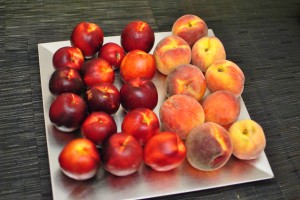So there's going to be a blue moon in a few days. Which means it will be the second full moon this month.
Why is it called a blue moon, anyway?

A full moon that, with photography's help, appears to be blue. But the blue moon we'll experience won't actually look blue.
(Photo from Geekologie)

This example month shows how the moon's phases mostly but don't exactly correspond with a calendar month.
(Image from menstruation.com.au)

Another psuedo-blue moon
(Photo from Albert Combrink)

And this "blue moon" isn't exactly real.
(Photo from Within My Eyes)

This moon looks blue in the photo, but the moon probably didn't appear to be so when the photographer took the picture. Just as the phrase "blue moon" indicates a moon that doesn't actually look blue.
(Photo from Doing the 116 Blog)
But why is it Blue?

Krakatoa (or Krakatau as the Indonesians call it) erupting more recently.
(Photo from Fajaryusufrock)
In true correspondence with the term, I am preparing this Daily Apple as a true Daily Apple -- the second one in two days. I also just discovered that I wrote an entry on Blue Moons once before. I completely forgot about that. Repeating a topic, my dear readers, is very rare. That's like the moon after the eruption of an Indonesian volcano rare.

One more not really blue moon for you
(Photo from Fact-o-tron)
Sources
Sky & Telescope, What's a Blue Moon?
EarthSky, The next Blue Moon is August 31, 2012
StarDate, Moon Phases
Moon Giant, What is a Blue Moon?
NASA Science News, Blue Moon
NASA, Blue Moon
Daily Apple, Full Moons, Orange and Otherwise
Farmers' Almanac, Full Moon Names and Their Meanings
Why is it called a blue moon, anyway?

A full moon that, with photography's help, appears to be blue. But the blue moon we'll experience won't actually look blue.
(Photo from Geekologie)
- Originally, a blue moon did not mean the 2nd full moon in a month. It meant something else.
- So, it takes about 29.5 days for a moon to go from full to new and back to full again. This is close to a month, but not quite. But still, if you average it out, 12 months in a year means there should be 12 full moons in a year. Assuming a season is 4 months long, there should be 3 full moons per season.

This example month shows how the moon's phases mostly but don't exactly correspond with a calendar month.
(Image from menstruation.com.au)
- But of course since our calendar doesn't match up exactly with what the moon does, every once in a while the anomalies show up. Sometimes there are 4 full moons per season. The Farmers' Almanac used to refer to that 4th full moon of the season as a blue moon.
- Then in 1946, a guy named James Hugh Pruett wrote an article for a magazine called Sky and Telescope. He consulted his Farmers' Almanac about blue moons (and a 1943 issue of the magazine which, in a Q&A column, was a bit vague about the definition), but in doing so, Pruett misunderstood the definition and he presented his misunderstanding in his article as fact. He wrote:
"Seven times in 19 years there were — and still are — 13 full moons in a year. This gives 11 months with one full moon each and one with two. This second in a month, so I interpret it, was called Blue Moon."
- Thus the definition that a blue moon is the 2nd full moon in a month was born.

Another psuedo-blue moon
(Photo from Albert Combrink)
- Subsequent articles of the magazine used the, shall we say, revised definition. So other people were this using 2nd full moon in a month as their definition, too. Books like the Kids’ World Almanac of Records and Facts were describing a blue moon as a 2nd full moon in a month. Trivial Pursuit used that as the definition of a blue moon, too. In short, that definition entered the popular culture and it is now considered the primary definition.
- One thing I find especially interesting about all of this is that official astronomy sites like NASA, etc., will refer to the newer definition as having come from "modern folklore." But it didn't. It came from a magazine dedicated to astronomy -- from astronomers themselves. Yes, it originated with a mistake, but it was an astronomy person who made it. So it's not exactly folklore.

And this "blue moon" isn't exactly real.
(Photo from Within My Eyes)
- According to the new definition -- 2nd full moon in a month -- here are the dates of recent-past & upcoming blue moons:
- December 31, 2009
- August 31, 2012
- July 31, 2015
- March 31, 2018
- October 31, 2020 (ooh, Halloween)
- August 31, 3023
- May 31, 2026
- December 31, 2028 (ooh, New Year's Eve)
- According to the original definition -- the 4th full moon in a season -- here are recent-past & upcoming blue moons:
- November 21, 2010
- August 21, 2013
- May 21, 2016
- Even though the dates are different, using either definition, blue moons occur about once every 3 years.
- So "once in a blue moon," which we normally mean as something that happens very rarely if at all, apparently really means about once every 3 years.

This moon looks blue in the photo, but the moon probably didn't appear to be so when the photographer took the picture. Just as the phrase "blue moon" indicates a moon that doesn't actually look blue.
(Photo from Doing the 116 Blog)
But why is it Blue?
- Now that we've got our terms and our dates straightened out, we still haven't found the answer to the question, why's it blue?
- Moons that actually appear to be blue in the sky are, in fact, very rare. The first known instance when the moon appeared to be blue happened in 1883, after the eruption of Krakatoa, a volcano in Indonesia.

Krakatoa (or Krakatau as the Indonesians call it) erupting more recently.
(Photo from Fajaryusufrock)
- The eruption was so enormous, scientists today think it must have been like the blast of a nuclear bomb that would be about 13 times the strength of the bomb that was dropped on Hiroshima in 1945. Tons of ash went everywhere, including up to the top of Earth's atmosphere.
- The ash had enough particles of just the right dimension (1 micron wide) that scattered red light but allowed other colors like blues and greens to pass. White moonbeams passing through the cloud of ash appeared to people on Earth as blue.
- The ash lingered for years, so the moon appeared as blue for a very long time (the sun also appeared as lavender but for some reason "lavender sun" didn't stick).
- Even though people saw the moon as blue for a long time, it hadn't happened before, or at all often as far as anybody knew. So the phrase "once in a blue moon" really did refer to something truly rare.
In true correspondence with the term, I am preparing this Daily Apple as a true Daily Apple -- the second one in two days. I also just discovered that I wrote an entry on Blue Moons once before. I completely forgot about that. Repeating a topic, my dear readers, is very rare. That's like the moon after the eruption of an Indonesian volcano rare.

One more not really blue moon for you
(Photo from Fact-o-tron)
Sources
Sky & Telescope, What's a Blue Moon?
EarthSky, The next Blue Moon is August 31, 2012
StarDate, Moon Phases
Moon Giant, What is a Blue Moon?
NASA Science News, Blue Moon
NASA, Blue Moon
Daily Apple, Full Moons, Orange and Otherwise
Farmers' Almanac, Full Moon Names and Their Meanings







































